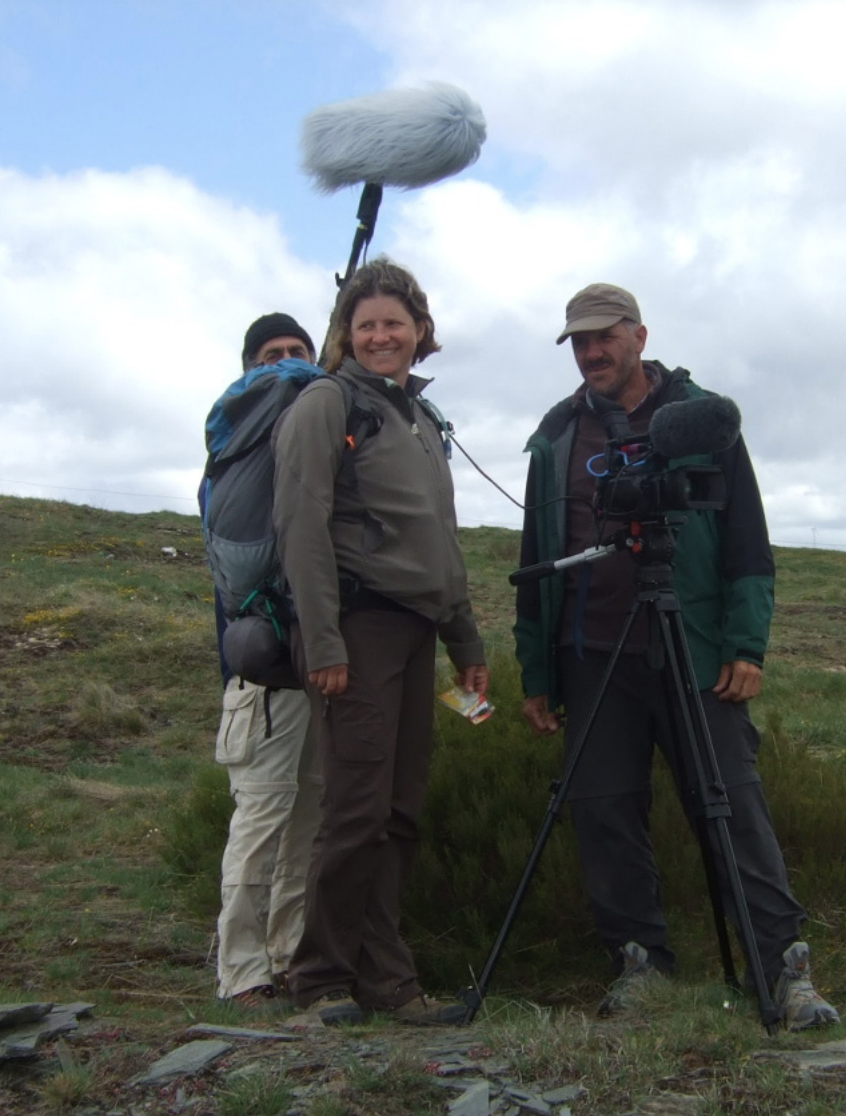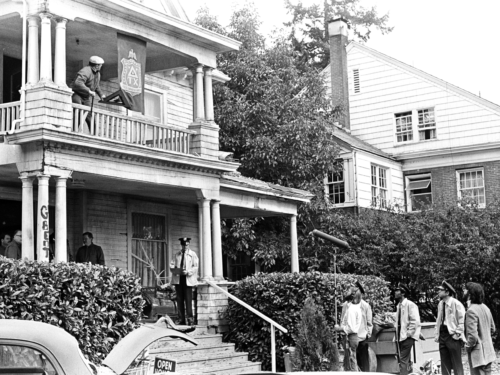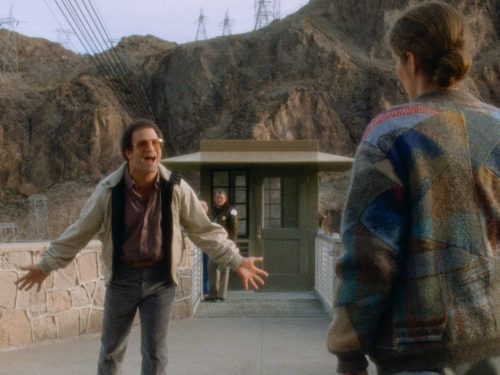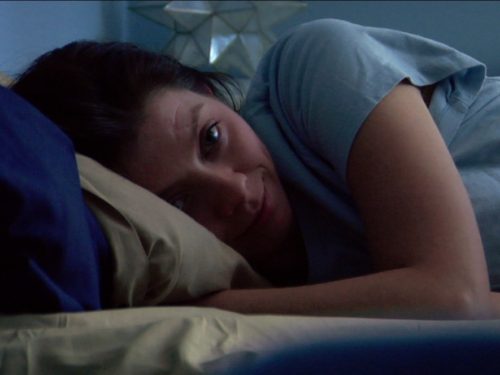‘Walking the Camino: Six Ways to Santiago’ follows the spiritual journey of six hikers across Spain’s famed 500-mile trail
Long treks are traditionally the epitome of private meditation — Cheryl Strayed didn’t wander off with pals on the Pacific Crest Trail hike that became Wild, and Chris McCandless was all for shirking human familiarity in the dark story of Into the Wild.
But in Walking The Camino: Six Ways to Santiago, by Portland filmmaker Lydia Smith, the private stories that drive boots onward are documented, and Smith’s own personal journey hits as many screens as will take it. Despite the 2013 documentary’s deep dive into individual realities, it was the trail itself that Smith was thinking of when she made the film.
“If the Camino was a person, what kind of film would they make?” she said she had asked herself. “I wanted to make a film that was really what the Camino would want — that is a good cross-section of people you would find and has the right feeling or tone.”

The film’s definitive subject then is not the six diverse characters it follows on their long, separate hikes, but the 1,200-year-old network of trails that criss-cross Spain en route to the cathedral of Santiago de Compostela. The most popular route, the French Way, is an inland trail that runs about 500 miles through towns and vineyards, beginning in France at Saint-Jean-Pied-de-Port.
Smith first hiked the trail in 2008 following a broken engagement. “It was a big transition — didn’t know where to go, what to do,” she said, seated in the dining room of her floating Portland home in January. “This little voice said to me, ‘Go do the Camino.’” She was taken with the trail as a personal experience, but initially resisted a fellow hiker’s suggestion that she combine the journey with her passion for filmmaking.

But she changed her tune after coming home and returned to the trail in 2009 with equipment and a crew hoping to tell the stories of those making the trek. The film divulges personal stories — the death of a partner or spiritual turmoil — that drive individuals to set aside their lives and hike for weeks.
“I think there are some people doing it for the adventure of it, some people are doing it because they lost someone either in a divorce or a death, I think there are some people who are in transition, that just retired and now it’s like ‘OK, what’s the next step?’” said Smith. “I tried to have people get to know me. A lot of the time I’d walk with them for a couple hours so they’d get to know me and trust me and understand where I was coming from.”
Smith’s prior experience with film was an asset — she had independently produced and wrote documentaries before, including They’re Just Kids, an educational documentary on children with disabilities. But Smith said she had a leg up in crafting the story of the Camino because of her personal understanding of its subject. The Way (2010), a drama starring Martin Sheen, is set on the trail and helped to popularize it around the same time as Six Ways to Santiago, but Smith points out that the former film is a story that just happens to take place there, while her documentary is about the trail itself.
“[The Way] really opened people’s eyes to the Camino and then they were interested,” said Smith. “It was a great story that took place on the Camino, but I wouldn’t say it was really about the Camino. There was a hole for ‘What’s the Camino really about?’”
The message that comes across in Six Ways, and throughout the history of the Camino, is the idea of selfless sacrifice.
“[Pilgrims] may have somebody work on their feet for an hour, and not ask for any money, not ask for anything. I think that’s a really big stretching moment for people, is to accept that kind of help and realize there’s that goodness in the world.”
In some ways, the original effort on the film is an echo of the spirit of the Camino itself. Despite the journey being far more broadly intentioned than its original purpose as a Catholic pilgrimage, the Camino is still dotted with stops that offer free lodging and food — donated hospitality and favors are common along the way.

Likewise, much of the crew on Six Ways worked for free, believing in Smith’s vision and the eventual returns of the project.
Smith has been able to pay herself (she pulled money from her retirement to finance the movie) and much of her crew back since the original release. But finding ways to market and distribute the film in the ensuing years has been a challenge.
Six Ways did a festival circuit in 2013, winning at the American Documentary Film Festival and others. The film also ran in theaters in 2014, where it pulled over $600,000 in a limited release. Smith has been trying to find a way to run it consistently on TV since. Eventually, she landed on a method of distribution where the movie floats in a database and independent stations roaming for content are able to pull it down as they plan programming. This has its ups and downs.
“In one airing, we had more viewers than six months in the theater. So you reach a lot more people. The only thing is, financially, we made a lot of money off six months in the theater,” she said. “With PBS, we’re not making any money. We had to invest some money. But that’s just kind of the way public broadcasting is in this country.”
This tactic resulted in 1,100 airings in December 2018 and more in the early months of 2019. Although this isn’t her ideal scenario, Smith said she’s happy to get the film in front of audiences in whatever way possible.

Part of the trouble has been the Camino’s history being tied to Catholicism. Although Smith said that you can find all manner of people making the pilgrimage today — from Catholics to Muslims to Atheists — it was still a tough sell for sponsors because of those roots.
“Even though the point of the film is that it’s open to anyone and everyone, because it has that spiritual nature, [corporate sponsors] don’t want to push anyone away.”
But that isn’t all bad either, she said. And at the end of the day, Smith is happy with what she’s made.
“It was a mixed blessing that I didn’t get any TV station or corporate sponsors or whatever because I was beholden to no one except me and my own vision,” she said. “All the other projects I’ve been involved with, I see certain cuts and I’m like, ‘Oh, I really wish I’d changed that.’ When I look at my film there’s nothing like that. So that’s the biggest success, when you feel satisfied and it’s matched your vision.”
Follow Cooper and Split Tooth Media on Twitter
(Split Tooth may earn a commission from purchases made through affiliate links on our site.)




